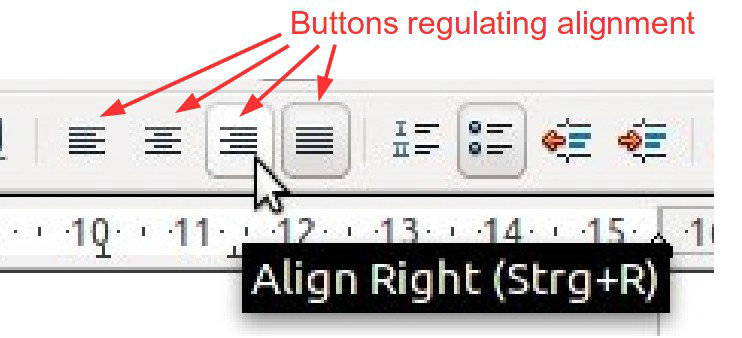Difference between revisions of "Documentation/Writer for Students/Default Page"
m |
m |
||
| Line 5: | Line 5: | ||
|PrevPage=Documentation/Writer for Students/Papers without a Title Page | |PrevPage=Documentation/Writer for Students/Papers without a Title Page | ||
|NextPage=Documentation/Writer for Students/Roman Page Numbering | |NextPage=Documentation/Writer for Students/Roman Page Numbering | ||
| − | |||
}}__NOTOC__ | }}__NOTOC__ | ||
| − | As already mentioned | + | As already mentioned in section 16 the '''Default''' page needs to be modified giving it a larger left margin of 3cm for the punch holes and most importantly a '''Header''' for the page numbers.<nowiki>*</nowiki> Here once again the individual steps: |
| − | + | * open the menu '''Format › Styles and formatting (F11)''' | |
| − | + | * activate the fourth button to list the '''Page styles''' (see illustration 19) | |
| − | + | * right click the '''Default style''' | |
| − | + | * choose '''Modify''' | |
| − | + | * under the tab '''Page''' increase the '''Margin › Left''' from '''2cm''' to '''3cm''' | |
| − | + | * confirm '''OK''' | |
| + | * double click the page style '''Default''' in order to apply it to your text | ||
| + | * back in your text place cursor inside header | ||
| + | * open menu Insert and there choose the option '''Fields''' | ||
| + | * choose '''Page number''' (not '''Page count''') | ||
| + | * press button for right alignment (see illustration 23) | ||
<div style="overflow: hidden"> | <div style="overflow: hidden"> | ||
<!--makes text to start after the picture--> | <!--makes text to start after the picture--> | ||
| − | [[File: | + | [[File:wfs_may2014_023 buttons alignment.png|none]] |
</div> | </div> | ||
| + | '''Illustration 23. The 4 alignment buttons: left, center, right and justified''' | ||
| − | + | Your header can contain other information besides the page number. You might want to add your name or even the title of the current chapter ('''Insert › Fields › Other › Document › Chapter › Chapter name'''). You would leave this information left aligned, remove the middle tab stop (the ┴ in the ruler bar) by pulling it down with your mouse and then press the '''Tab''' key to shift the page number to the right margin. Every time a new chapter starts, the header will change along with it. | |
| − | + | ||
| − | + | ||
------- | ------- | ||
| − | <nowiki>*</nowiki> | + | <nowiki>*</nowiki> Instead of a Header you might prefer a Footer. Footers used to be very popular, but many students now prefer headers to accommodate not only the page number but also extra information such as his or her name and matriculation number. |
<br /> | <br /> | ||
Revision as of 13:36, 19 May 2014
- Introduction
- Theory
- Document Structure
- Chapter Headings
- Chapter Numbering
- Table of Contents
- Outline
- Navigator
- Text Body
- Paragraph styles overview
- Reusing styles
- Default Page Formatting
- Title Page
- Papers without a Title Page
- Pages with and without numbering
- Roman Page Numbering
- Group Work
- Proofreading
- Numbered lists and bullets
- Line numbering
- Cross-references
- Footnotes
- Bibliography
- Quotes
- Tables
- Charts
- Pictures
- Snapshots
- Presentations & Graphics
- Cross tables (Statistics)
- Extra Long Web Adresses
- Fonts
- Emphasis
- Special Characters
- Non separable combinations
- Shortcut keys
- Mouse clicks
- PDFs
- Saving your files
- Several files open at once
- Search and replace
- Spell Check
- Synonyms
- Document Infos
- Labels and Form letters
- Help
- Installing Program
- Microsoft Word
- Practice I
- Practice II
As already mentioned in section 16 the Default page needs to be modified giving it a larger left margin of 3cm for the punch holes and most importantly a Header for the page numbers.* Here once again the individual steps:
- open the menu Format › Styles and formatting (F11)
- activate the fourth button to list the Page styles (see illustration 19)
- right click the Default style
- choose Modify
- under the tab Page increase the Margin › Left from 2cm to 3cm
- confirm OK
- double click the page style Default in order to apply it to your text
- back in your text place cursor inside header
- open menu Insert and there choose the option Fields
- choose Page number (not Page count)
- press button for right alignment (see illustration 23)
Illustration 23. The 4 alignment buttons: left, center, right and justified
Your header can contain other information besides the page number. You might want to add your name or even the title of the current chapter (Insert › Fields › Other › Document › Chapter › Chapter name). You would leave this information left aligned, remove the middle tab stop (the ┴ in the ruler bar) by pulling it down with your mouse and then press the Tab key to shift the page number to the right margin. Every time a new chapter starts, the header will change along with it.
* Instead of a Header you might prefer a Footer. Footers used to be very popular, but many students now prefer headers to accommodate not only the page number but also extra information such as his or her name and matriculation number.
